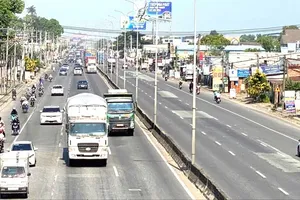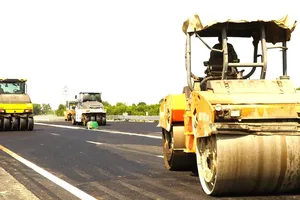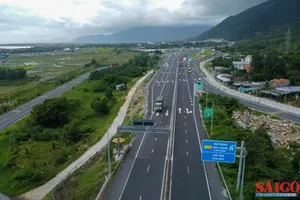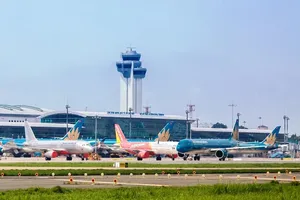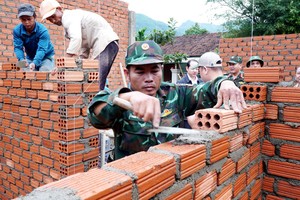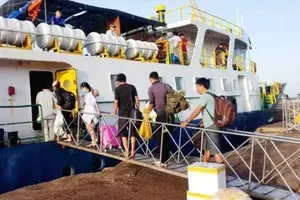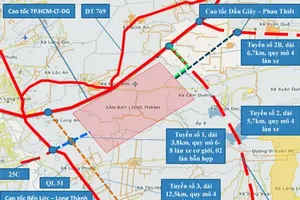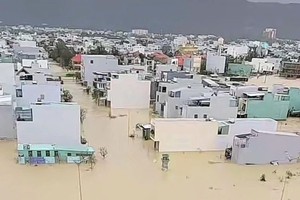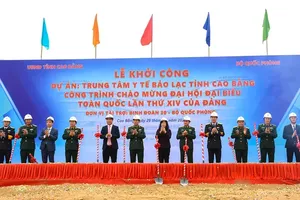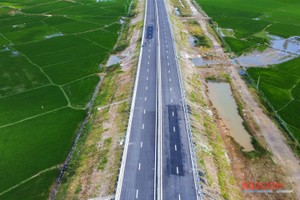Irrigation infrastructure is considered an important solution in response to prolonged drought, saltwater intrusion, and rising sea levels. However, many localities in the Mekong Delta are facing financial problem for the construction of freshwater reservoirs, dams, culverts, and dikes.

In the past two years, the Ministry of Agriculture and Rural Development and Tien Giang Province have spent nearly VND1,400 billion (US$56,296,442) heavily investing in building 7 salinity prevention sluices Rach Gam, Phu Phong, Cay Cung, Hai Tan, Mu U, Cai Son, Nguyen Tan Thanh to control saltwater intrusion from Tien River. It is expected that these saltwater prevention projects and freshwater storage projects will be put into operation by the end of 2024.
However, Vice Chairman of Tien Giang Provincial People's Committee Pham Van Trong revealed that the province still has a lot of remaining work in responding to drought and saltwater intrusion.
Currently, the irrigation system in Tien Giang Province is still not closed because the province is short of money to carry out scores of projects such as Tra Tan, Ba Rai, Cai Be sewer project worth VND880 billion, construction project of a dike system and sluice gates to prevent saltwater intrusion on Ngu Hiep island with capital of VND600 billion, project to build a dike system and sluice gates to prevent salinity on Tan Phong island costing VND500 billion
According to Vice Chairman of Tien Giang Provincial People's Committee Pham Van Trong, in the West, rivers and streams are intertwined and interconnected. If the irrigation system to prevent salinity and store fresh water is not invested in synchronously and effectively, it will not be developed.
Along the Tien River, there are 10 culverts, but only 7 have been built. The capital problem of building the remaining 3 culverts from Bao Dinh upstream is a headache for the local government.
Vice Chairman Pham Van Trong said that Tien Giang administration is determined to invest in the remaining culverts; if not, people will have to suffer severe consequences from drought and saltwater intrusion, not to mention a waste of the funds for building previous sluices.
Similarly, Director Huynh Ngoc Nha of the Department of Agriculture and Rural Development of Soc Trang Province moaned that the irrigation works and systems to prevent salinity and store fresh water in the plan have not yet been implemented because the province doesn’t have enough money.
While many new irrigation projects, culverts, and dams are waiting for capital and have not yet been built, many irrigation projects have been completed and put into operation but are not effective. To prevent salinity, store fresh water, eliminate waterlogging, wash alum, and improve soil for 193,000 hectares of natural land, including 100,000 hectares of cultivated land and 20,100 hectares of aquaculture land, Ben Tre Province implemented the construction of Ba Lai dam with a total cost of nearly VND70 billion in 2000.
However, local people said that so far this project has not been as effective as originally planned.
Inhabitant Trinh Minh Ha in Tan Xuan Commune of Ba Tri District analyzed that, despite the Ba Lai dam, in recent times, salt water from Cua Dai River has still flowed into Ham Luong River, Giao Hoa River and Chet Say Canal, turning water in Ba Lai River into saltwater. Salinity on the Ba Lai River is increasing, especially during the prolonged dry season, making it impossible for local people to use this water source for agricultural production.
To address this situation, authorities of Ben Tre Province recently had to spend more money building a temporary dam to block the Ba Lai River. Not far from Ba Lai dam, the Kenh Lap freshwater reservoir was built in 2017 with a cost of VND85 billion. After 5 years of operation, this freshwater reservoir has now become salty.
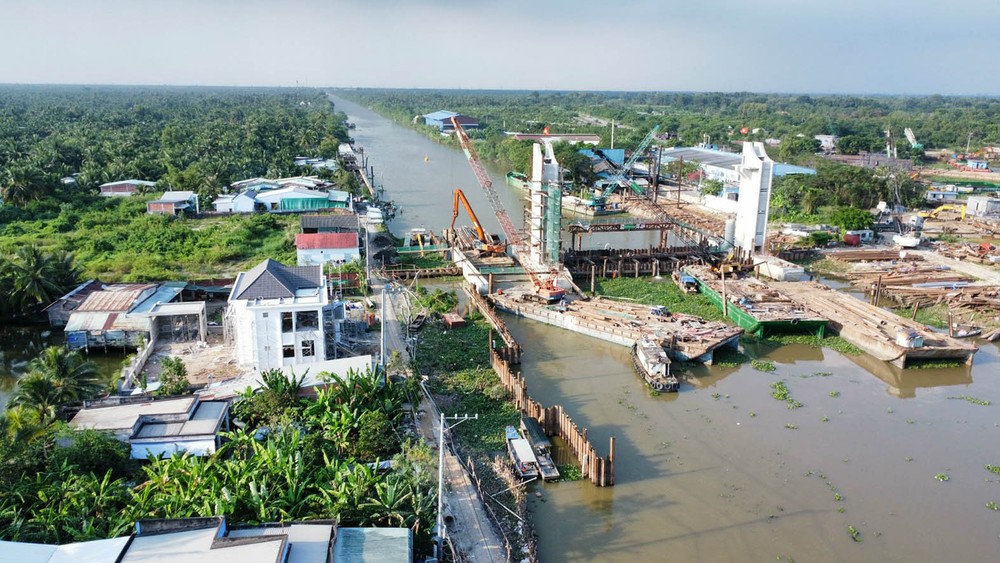
Currently, the water in the lake is saline at 0.6‰ exceeding the allowable level, seriously affecting agricultural production and daily life activities of more than 200,000 people in the area.
Faced with the difficulty of lacking funds to implement construction projects and invest in infrastructure to cope with drought and saltwater intrusion, many localities proactively call for social contributions for the construction of dams, and culverts.
Huynh Quoc Viet, Chairman of Ca Mau Provincial People's Committee, affirmed that the province is focusing on implementing domestic water supply projects for people. Attracting investment from businesses for the development of clean water system in rural areas is high on the province’s list of priorities. The participation of corporate capital will contribute to reducing the burden on the local state budget, but localities need to strengthen supervision and management to ensure people's benefits.
In regard to the state-budgeted water supply projects, Ca Mau has approved the investment policy of the rural clean water supply project for the period 2021-2025 with a total investment capital of nearly VND75 billion. Accordingly, a distribution pipeline of nearly 200km will be built to provide domestic water for about 13,864 households in districts Tran Van Thoi, Cai Nuoc, Dam Doi, Phu Tan, Thoi Binh, Nam Can, Ngoc Hien and Ca Mau City.
Vice Chairman of Tien Giang Provincial People's Committee Pham Van Trong said that the province has just allocated funds to invest in 5 main pipelines to transport water sources of Dong Tam Water Plant to the eastern districts, and at the same time, the province will implement the water supply pipeline project in the province’s eastern gateway and a booster pump station in Go Cong District with a total cost of VND345 billion.
In the coming time, Tien Giang will continue to invest in 18 main water supply projects; 11 projects under the secondary water supply network investment project to supply water for households in rural areas and 350 water supply projects in low-lying areas with a total cost of VND1,752 billion.
The Mekong Delta region faces increasingly serious salinization, landslides, and sea level rise. In recent years, each year landslides have caused the loss of 500 hectares of coastal land, forcing more than 19,000 riverside households to relocate. The entire region currently has 561 riverbanks and coastal landslides, with a total length of about 810km. Among them, there are 63 particularly dangerous landslides/204km that need to be handled at a cost of about VND13,648 billion.

